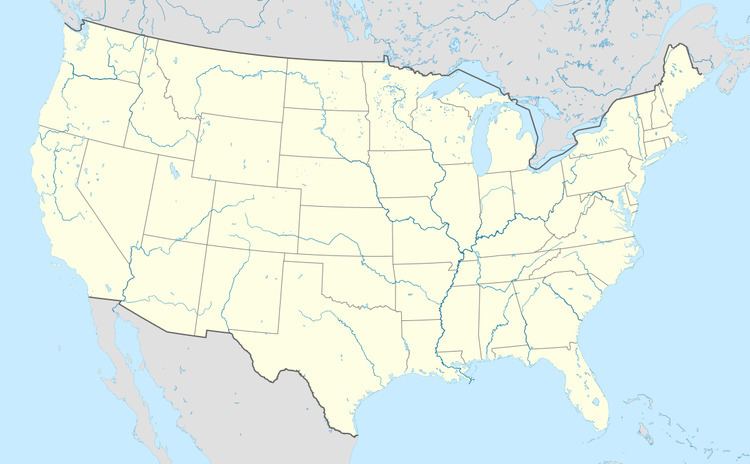The Wilmington and Western Railroad (reporting mark WWRC) is a freight and heritage railroad in northern Delaware, operating over a former Baltimore and Ohio Railroad (B&O) branch between Wilmington and Hockessin. The 10.2-mile (16.4 km) railroad operates both steam and diesel locomotives. It was added to the National Register of Historic Places as a national historic district in 1980. Wilmington Western serves one customer for revenue service, and interchanges with CSX Transportation at Landenberg Junction, Delaware
The Delaware and Chester County Railroad was incorporated in February 1867 to build from Wilmington in the direction of Parkesburg or Atglen, Pennsylvania, and was renamed the Wilmington and Western Railroad in March 1869, opening the line to Landenberg in 1872. A foreclosure sale in April 1877 produced the Delaware Western Railroad, which was incorporated in June 1877 and merged into the Baltimore and Philadelphia Railroad, a B&O subsidiary, in February 1883.
The B&O cut back the line to Southwood in the early 1940s and to Hockessin in the late 1950s. Historic Red Clay Valley, Inc. began operating steam tourist trains on weekends in 1966, reusing the old W&W name, and in August 1982 the W&W bought the branch from the Chessie System for $25,000, which included Ex-B&O SW1 #8408 as a part of the purchase.
In 1999, the rains of Hurricane Floyd caused considerable damage to the railroad. Two trestles were entirely destroyed by the flooding of Red Clay Creek, which also caused track washouts and damaged several other trestles. The two destroyed bridges were replaced by steel trestles, but the other timber trestles were simply repaired.
In 2003, Tropical Storm Henri struck the valley and produced an even more catastrophic flood. While the two steel bridges (and an iron trestle at Ashland) survived the flood, the remaining bridges were swept away or irreparably damaged. Despite the damage caused by these storms, the Wilmington and Western continued to operate on the remaining track, and replaced all of the destroyed bridges with steel trestles. The line officially reopened into Hockessin on June 30, 2007.
Steam4-4-0 American #98 was built by the American Locomotive Company of Schenectady, NY in January 1909 (construction #45921). The locomotive was built for the Mississippi Central Railroad of Hattiesburg, Mississippi. The engine ran for the Mississippi Central Railroad from 1909 to 1944, before it was sold to Paulsen Spence, the owner of the Louisiana Eastern Railroad. The engine was sold again to Thomas C. Marshall, in 1960, and was moved to the Strasburg Rail Road in 1961 for storage. The locomotive was moved to the Wilmington and Western in 1964, and would start operating on the Wilmington and Western, in the fall of 1972. The Engine is currently one of two operational American Type steam locomotives, east of the Mississippi. The engine is expected to be taken out of service in 2019 for its Federally Mandated 1,472 Day Inspection.0-6-0 Switcher #58 was built by the Baldwin Locomotive Works of Philadelphia in October 1907 (construction #31899) for the Atlanta, Birmingham, and Atlantic Railroad, soon to become the Atlanta, Birmingham, & Coast Railroad. The engine was numbered was originally numbered 58, but was numbered to 27 before being pressed into service. The engine would find multiple owners over the years, including the United States Army, Virginia Blue Ridge Railway, and the Mead Company where it was renumbered 300. The engine was sold to Brian Woodcock in 1973, where he would store the engine at the Wilmington and Western Railroad, and it would be renumbered to number 58 until the Mid-1980's, when it would be moved to Avondale, PA. The engine was donated to the HRCV in 1997 by its owner with intentions for it to operate, and would do so in the Fall of 1998. In November 2013, the engine was taken out of service due to a Federally Mandated 1,472 Day Rebuild. The engine is Expected to be operational by the 2017 Season.2-6-0 Mogul #92 was built by the Canadian Locomotive Company of Kingston, Ontario in 1910 for the Grand Trunk Railroad (Soon to be owned by Canadian National Railway) . It was the first steam locomotive to operate for the railroad when it became a tourist line. The engine operated from Spring of 1966, to Fall of 1972. The engine was taken out of service due to mechanical issues. The engine is stored in Marshallton, awaiting restoration.0-4-0F #1 was built for Delaware Power & Light by H.K. Porter in 1950. The Engine is a fireless cooker, meaning it is a locomotive without a firebox. The engine is currently stored in Marshallton.DieselSW-1 #114 was built in 1940 by the Electro-Motive Corporation (EMC) of General Motors for the Lehigh Valley Railroad. The engine operated for the Lehigh Valley Railroad for many years, eventually to be sold to the Maryland Port Authority as a switch engine. In 1974, it was purchased for excursion service on the Ocean City Western Railroad. The engine would be purchased by the HRCV in 1992 in trade for ALCo S-2 #3. The engine has been in excursion and occasional freight service since 1993.SW-1 #8408 was built in 1940 by EMC of General Motors and served the B&O in freight service on the Landenberg Branch until 1982. It operated on the Tourist Line from 1982 until 2008, when it was taken out of service for restoration of the locomotive. In 2011, it was shipped to McHugh Locomotive & Equipment for restoration. The Engine came back to the Wilmington and Western in Early 2016, and now operates on regular diesel-powered excursions.Diesel motor carDoodlebug #4662 (aka "The Paul Revere"); built by Pullman Standard for the Pennsylvania Railroad; in 1929. The engine ran for the Pennsylvania Railroad, mostly on Branchlines. The "Doodlebug" was retired in 1959, being sold to the National Capitol Trolley Museum. The engine was purchased by the HRCV in 1967, and has operated since 1979. The engine is one of two Pennsylvania Railroad Doodlebugs still in existence.
